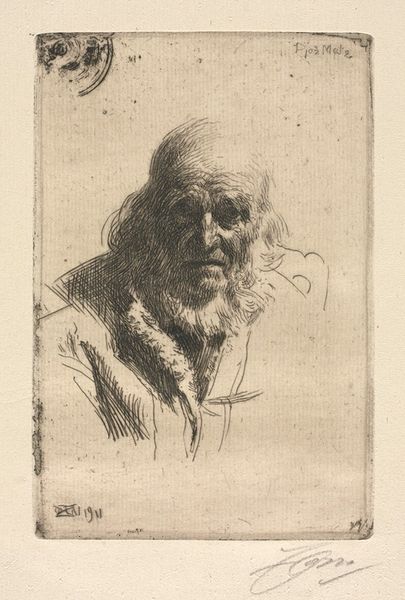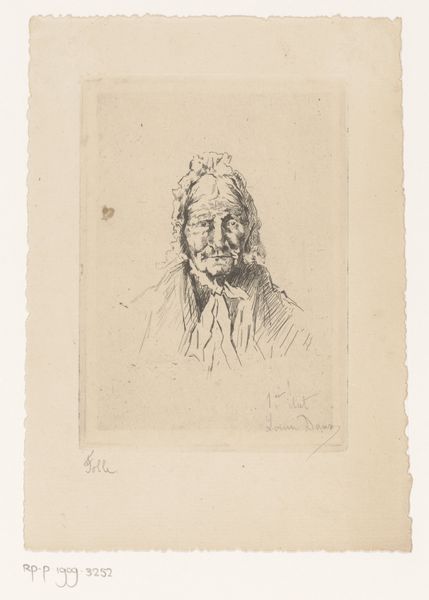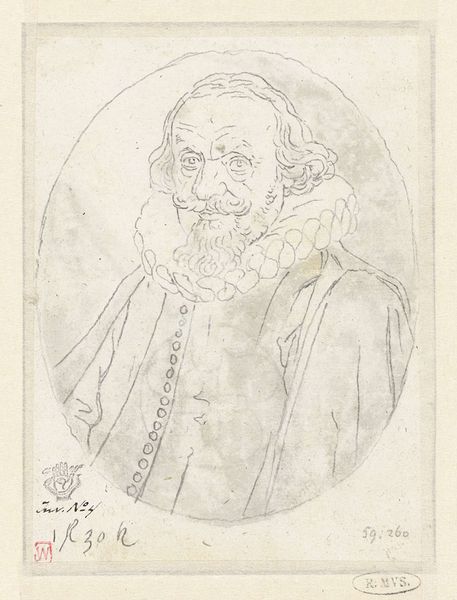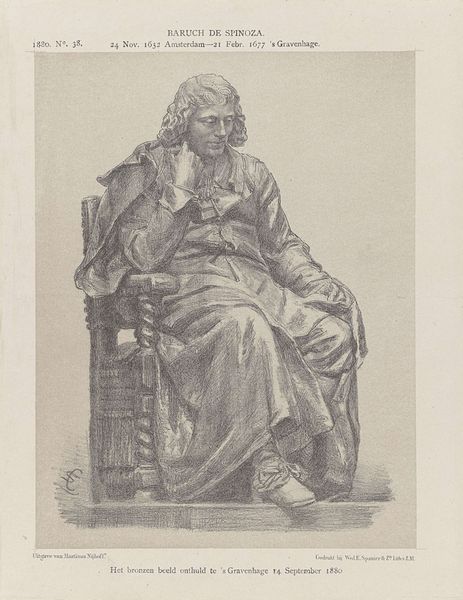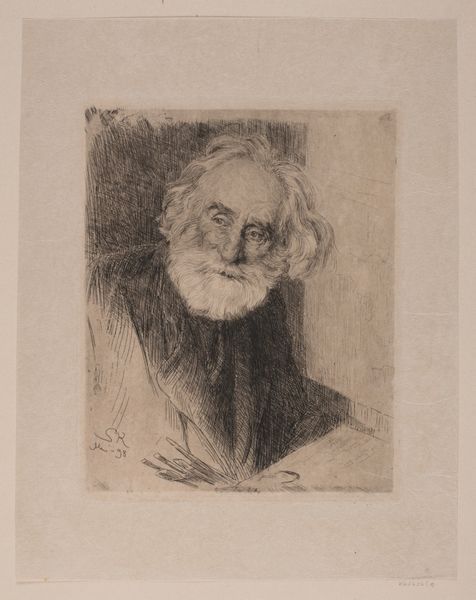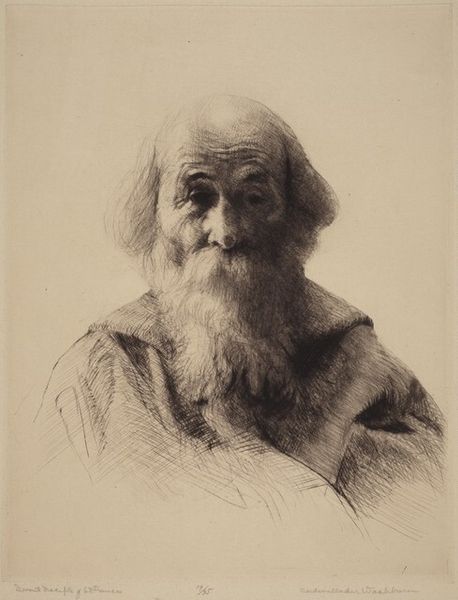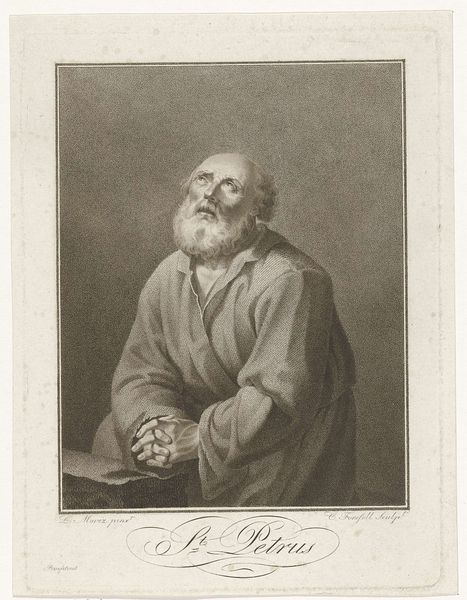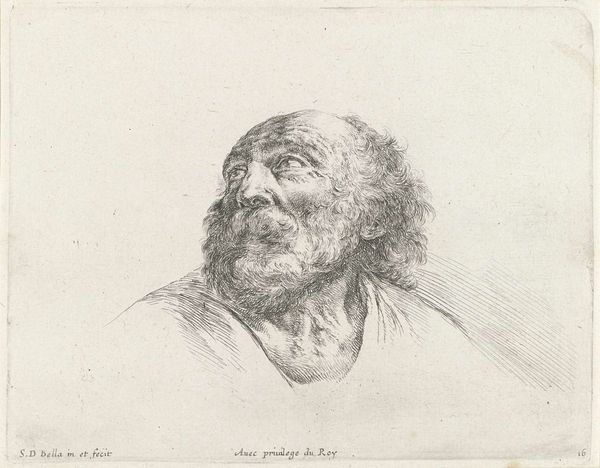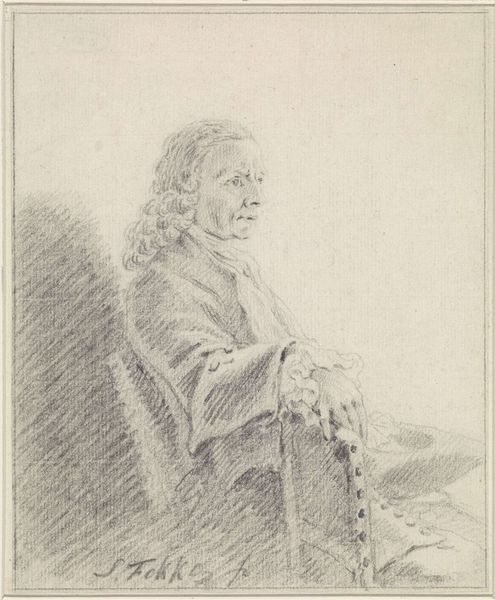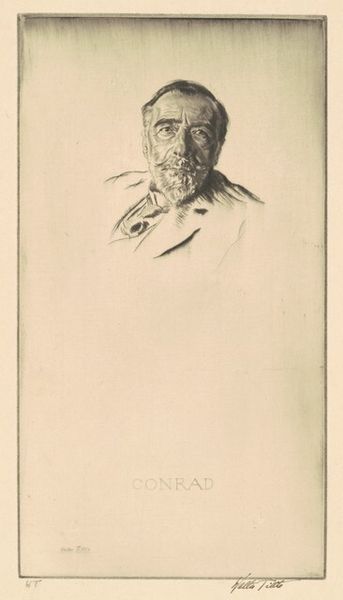
drawing, pencil
#
portrait
#
pencil drawn
#
drawing
#
pencil sketch
#
pencil drawing
#
romanticism
#
pencil
#
portrait drawing
#
realism
Copyright: Public Domain: Artvee
Curator: Adolph Tidemand rendered this likeness of Andres Olson Bukkerud in 1844, employing the delicate touch of pencil on paper. It’s quite striking, wouldn't you agree? Editor: Absolutely. My initial reaction is drawn to the subject's direct gaze. It's almost confrontational, heightened by the stark contrast and the medium's unforgiving clarity. It has a somewhat stoic feel, doesn’t it? Curator: It does, indeed. Consider, though, the context. This was a period of burgeoning national romanticism in Norway. Tidemand sought to capture the essence of the Norwegian folk, particularly its elders, like Bukkerud. His portrait serves as a representation, arguably romanticized, of rural life and the perceived virtues of a rapidly disappearing way of life amid growing industrialization and urbanization. Editor: I see what you mean. The formal elements certainly bolster this reading. Look at the composition. Bukkerud is centered, filling the frame—suggesting importance. The detail given to his face compared to the loosely sketched body directs our attention precisely to his features, aging face, his wisdom... Curator: Precisely. But this can also be read through a critical lens. Did Tidemand truly capture Bukkerud, or did he merely construct an image of what he believed a Norwegian elder should be? To what extent is Bukkerud’s individual identity overshadowed by the artist's nationalistic agenda, consciously or unconsciously? Was he complicit, an active participant or coerced? It is difficult to tell from this distance. Editor: That’s a fair point. Even with the evident skill in rendering textures—notice the beard and the flow of his white hair—the image itself, rendered in a drawing that can’t possibly reflect the real vibrant colours of his life—functions as a sort of cultural artifact more than a straightforward likeness. The clothing, for instance; its shape and form rather than the garment itself are clearly meant to highlight structure and volume through shadow, not fabric. It almost transcends materiality! Curator: A very keen observation. I feel our readings, while approaching the portraiture from diverse vantage points, converge, reinforcing its complex intersection of artistry, identity, and the politics of representation inherent within nineteenth-century portrayals. Editor: Indeed. A fascinating study of both a man and a moment.
Comments
No comments
Be the first to comment and join the conversation on the ultimate creative platform.
